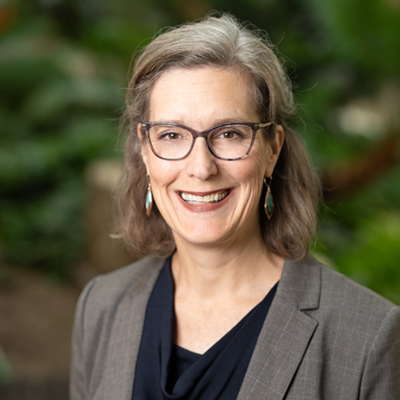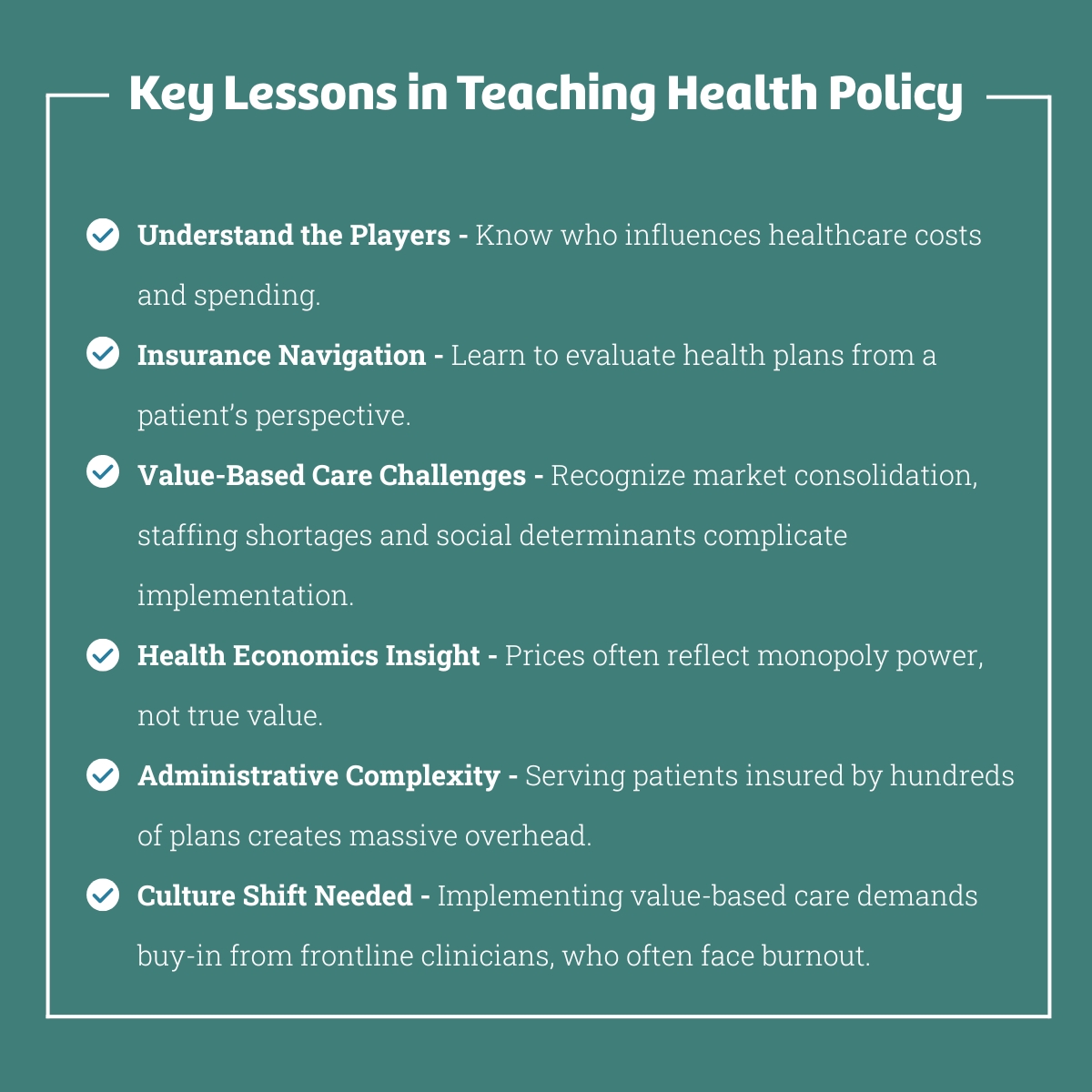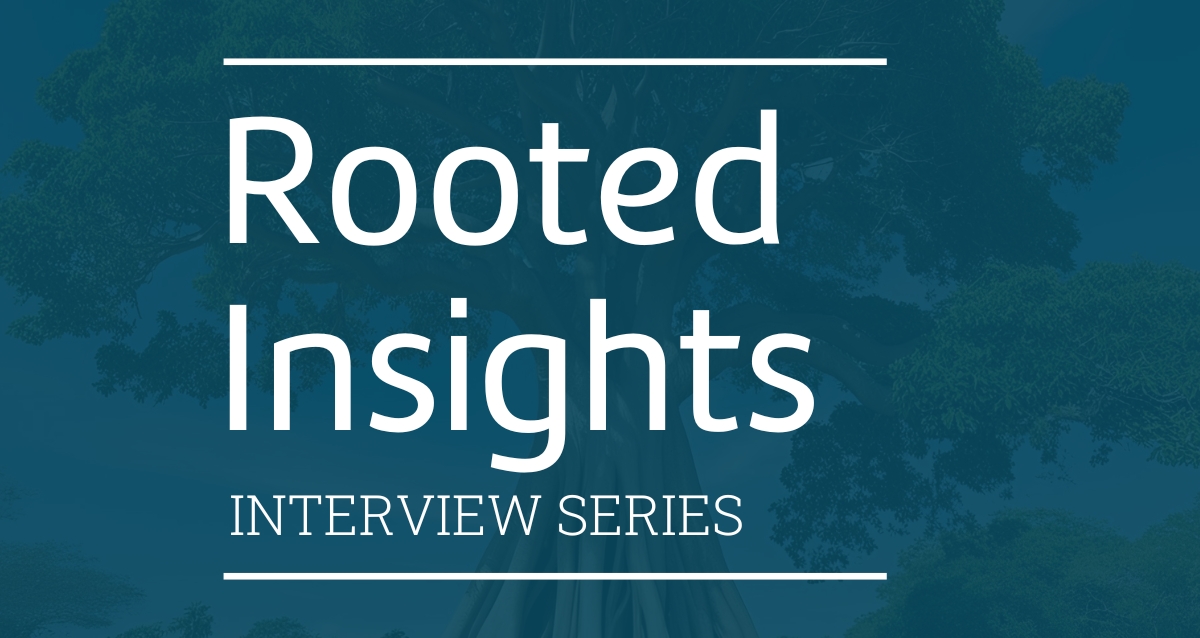Rooted Insights with
Mary Michaud, MPP
Mary Michaud, MPP
Rooted Insights with Mary Michaud, MPP
An Educator’s perspective: Shaping the future of public health policy
As part of the Rooted Insights series, Onward Academic Partners recently met with Mary Davis Michaud, MPP, who has worked in quality measures development, public health, and health policy. She currently serves as the Director of Experiential Learning at the La Follette School of Public Affairs at the University of Wisconsin-Madison, where she teaches health policy and the school’s client-based workshop courses.
We spoke with Mary about her role helping prepare the next generation of leaders in health policy.

Mary Davis Michaud, UW-Madison
You teach health policy for undergraduate and graduate students. What are some key lessons you want them to take with them? With the ongoing shift toward value-based care, how do you help them understand this transition?
A majority of our undergraduate students who complete our certificate in health policy are STEM majors at UW-Madison on a path toward health professional training. One goal is that students understand the administrative and financial culture they are walking into, even as trainees. Recognize patterns and incentives, work effectively in teams, build some shock absorbers.
We start with basics. Who are the “players?” What factors drive spending and costs in health care? Once students understand some of the root causes and history that led up to our fragmented, multi-payer system of care, they begin to see the incentives at play. They first learn to navigate the insurance system from a patient’s point of view when they are assigned a case—a hypothetical person—whose employment, health needs, age, dependents, and income all matter to insurance coverage. Students navigate the actual online systems to compare health insurance plans—deductibles, copays, coinsurance, cost sharing, network limitations. They must recommend a plan, give the rationale why it’s the best option, and identify tradeoffs in cost and access. They then identify ways policy or industry changes could improve that user experience.
On the supply side, we review types of payment, and they begin to understand the rationale for value-based purchasing. Today’s perfect storm in health care makes VBP implementation tricky. I started my career developing quality measures to inform infant risk models for Medicare, and we quickly discovered the many challenges of capturing insights using claims, much less EHR data. Now, amid insurance and provider market consolidation, staffing shortages, administrative complexity, and patient acuity driven by social needs outside the realm of health care policy, it’s so tough to move the needle on population health metrics. The triple-whammy of chronic disease, behavioral health, and aging makes implementing value-based care a tall order, and the infrastructure needed can quickly add costs. It’s still unclear how much AI models can be trusted to help.
I design cases to help students understand these factors, with health economics at the core. They learn that in some markets, prices do not reflect real value, not necessarily because value isn’t being delivered but because of monopoly power. I ask them, do you think employers get value when they pay upwards of $25,000 per annual family premium? Many are from smaller communities around Wisconsin, and their parents work for small businesses. Students ask why smaller employers don’t unite in protest when large firms get a far better deal in the insurance market—in 2023, small businesses paid 11% more for premiums and 43% more for deductibles than large firms. They wonder how much small businesses could expand, create jobs, diversify, if costs weren’t passed on to employers through premiums.
We talk about the administrative overhead it takes to serve a panel of patients insured by 200 different health plans. What if we figured out how to reduce administrative complexity? It’s certainly not what they expected to come out of the course learning.
We also teach policy students that implementation is everything, so we discuss the culture shift necessary to deliver value. When undergraduate students come out of the health economics unit saying, “I’m a fan of value-based care,” I say, let’s just stop for a second and think about what that feels like to people inside the system, implementing it. Supposedly your system gets bonus payments but you never really see that at the clinic level. You may not even see how your data compares, what’s going on in your system.
Over the last three decades, physicians have gone from being autonomous actors with a lot of say in their practices to being told: You will be employees of a firm that you largely don’t control. Payers will measure your quality of care, which depends on your team’s performance, even as you struggle desperately to adequately staff your team. Even when you Do the Right Thing and serve high-risk populations, risk adjustment isn’t really your thing (you were busy studying medicine), so you’re skeptical. All these pieces are reasonable to expect. Burnout is also reasonable to expect.
“When undergraduate students come out of the health economics unit saying, ‘I’m a fan of value-based care,’ I say, let’s just stop for a second and think about what that feels like to people inside the system, implementing it.”
What lessons have you learned from your leadership roles in public health?
Leadership matters, and it’s important to build adaptive skills. Develop relationships with people you can trust who will tell you honestly about the risks of various decisions. Working as community health director for Public Health Madison & Dane County, which serves a county of about 600,000, I developed a lot of empathy for people in middle management, where you take direction from those at the top, or from constituents with competing interests (like 20 alders and 38 county supervisors, a mayor, and a county executive). How do you balance these interests with the agency’s core mission, and then realistically assess what staff can handle? That’s the day-to-day.
And depending on their training, different folks define public health problems quite distinctly. Some see the need for prevention, while others focus on their roles in crisis intervention. All these perspectives matter, but scarce resources mean setting priorities, which is often unpopular. You become this translator, trying your best to respond or plan for unpredictable circumstances, like when someone shows up in a local ER with measles, or when fentanyl shows up in the heroin supply, or when local school districts want to partner to build capacity for early intervention to support mental health.
Implementation is easier said than done. People outside of government often say, “Why don’t we just change this?” Well, we have open records rules, or we need to notify vendors 3 weeks in advance of a bid release, or it’s simply outside our jurisdiction or mandate. There’s a distinct standard for working in the public service because we’re entrusted to address public problems with public funds, and we need to steward them responsibly.
What advice would you give to current students aspiring to work in public health or the policy space?
I observe a lot of people who want to study public health but know very little about medical care policy, or vice versa. Maybe they’re focusing on infectious diseases, or epidemiology, or more of a traditional realm of public health, which clearly, we need. Or maybe they are laser-focused on STEM and medical school admissions. I help them understand that more and more of state budgets go to pay for Medicaid, which often comes at the cost of investments in things like K-12 and higher education, infrastructure, and natural resources management. If you don’t understand the incentives in the health care system, and how healthcare pulls resources from what we could invest upstream, then you’re missing the huge piece of this puzzle. You can talk a lot about how upstream factors impact public health, but until big corporate entities take any of that seriously and support policy that promotes outcomes longer term, the point remains somewhat moot.

In the meantime, I teach students to pay attention to how the funds flow. Who owns what. One out of five dollars in our economy are spent on healthcare, and a miniscule fraction goes toward public health. Would I rather teach how upstream policy can prevent chronic disease? Absolutely, especially when an overarching health policy goal for thirty years has been “slowing the rate of growth in spending.” But here we are. In a culture focused on individual responsibility, we cannot assume people connect the dots between systemic patterns of inequity in education and health. Or income and health. We don’t typically teach people about dynamic systems and seeing the whole; instead, we teach them how to become reductionists. The polarized blame game doesn’t help us get to better solutions, because better solutions are all about compromise and holding a long-term view of the public interest.
I teach systems. Students learn, for example, that healthcare systems are the largest employers in a lot of communities. A policy challenge over the last 20 years is that many are no longer locally owned, they are owned outside of the community, and decisions with profound implications for communities are thus made elsewhere. By looking at workforce issues in long-term care, students also learn that broader labor market trends deeply affect health care systems, and these, too, impact communities. They learn to look differently at the “players” in the system by examining the relationships, rules, and incentives at play in those systems.
What inspired you originally to pursue a career in public policy? How have your interests evolved?
In high school, my teacher for U.S. History and Contemporary World Affairs pushed us into the complexity of it all. Every position we debated had a downside, he forced us to understand many sides of an issue, and he taught us to use evidence to argue our points.
After college where I studied politics and economics, I won some fellowships to live and work overseas, in Central America and Southeast Asia, and realized the power of the rule of law in a democracy. Living and working in Thailand, I saw open corruption along with a military coup that played out violently on the streets of Bangkok, close to where I lived. I no longer took the rule of law for granted. Working for an organization there that promoted health through economic and community development, I also learned how seemingly small changes in policy—access to preventive services for low-wage workers, reimbursement for local sanitation upgrades, microloans for small businesses—profoundly improved community wellbeing. When I came back, I worked on immigrant community health in Chicago, then decided to study health administration and policy at the University of Chicago.
More and more, I recognize the power of the arts and design, especially the power of narrative, to shift people’s beliefs and attitudes. I think the field of public policy has a lot of work to do on incorporating those pieces into our work. I’m a visual artist, and it’s clear that design offers tools to capture the perspectives of people who use government services. We need that more than ever. I now pay a lot more attention to understanding how to use art and design to shape policy outcomes.
If you had $1 billion to spend on one public health initiative, how would you spend it and why?
I would expand comprehensive reproductive health education and access across the country. Offer universal, comprehensive, informed access to reproductive technology and choice. We already have proven, inexpensive technology like LARC, and the evidence is crystal clear that comprehensive reproductive health education and access to care would improve a host of health and developmental outcomes. But young folks also need high-quality, evidence-based curricula about human reproductive physiology and how to navigate and build healthy relationships.
If I had another $500 billion, I would make work more humane, pay living (or thriving) wages, and offer a universal package of paid family and sick leave. Just a couple of years of more generous child and family tax policy during the pandemic (through boosting EITC and childcare tax credit) will undoubtedly influence a cohort of children whose families those policies briefly lifted out of poverty. We’ll see—it’s a natural experiment that folks are studying. Compared to other wealthy countries, the U.S. sees worse and more inequitable population health outcomes. Other nations invest more in equitable social policy and primary care, and their health care systems streamline payment and coverage, offering insurance coverage regardless of employment status. My students are astounded to compare how these factors influence equity and relative per capita cost.

Rooted Insights is an engaging interview series that brings you candid conversations with some of the most dynamic leaders in academic medical administration. Over the years, I’ve had the privilege of learning from and collaborating with these remarkable individuals, and now, we’re sharing their insights and experiences directly with you.
Each interview offers a concise yet impactful perspective on timely and relevant issues in their area of expertise across academic medicine. Whether seeking new ideas, professional inspiration, or development guidance, these conversations are designed to spark your curiosity.
If you’d like to dive deeper, please contact me directly and we can continue the conversation.
Sit back and enjoy this series.

